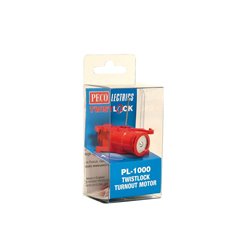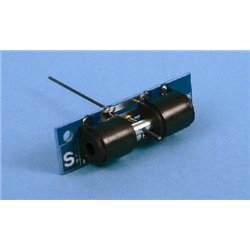Semaphore signals, those distinctive mechanical arms that once graced railway lines across the UK, were largely...
No products
Product successfully added to your shopping cart
There are 0 items in your cart. There is 1 item in your cart.
Search Tips
Can I operate two point motors with the same switch?
There are times when you may want to operate more than one set of points using just one switch, examples of locations where this could be an advantage include, crossovers, catch points and when a dedicated route is required, this is not a problem and relatively easy to do but there are things to consider.
The most common type of point motor used in the UK is a solenoid motor. They work by using a pulse of electricity (created by a CDU and relevant switch) to create a momentary magnetic pull on one side of the point motor or the other. This results in a metal bar being attracted to one side or the other and hey-presto, your points move. This is relevant because the more point motors that the electric pulse is split between, the less magnetic pull you will create, and that could result in your points not opening fully into position. In reality, the sharing of power between sets of points is not a problem because most CDUs (Capacitor Discharge Units) will generate enough power to comfortably operate up to three sets of points which should be enough for you two set a route or operate the couple of points needed for a crossover, but, to answer the original question properly, yes you can operate multiple points from just one switch, however, add too many points, and you may not have enough power to do so effectively.
The other thing to consider when wiring two or more point motors into just one switch is that it will be a permanent arrangement. This may be more of an issue when using the switch to set a specific route, for example, to route a train over a crossover and then into a siding, loop or branch-line. If you are considering wiring such a route into a single switch, then it will eliminate the possibility of setting a route for just the crossover or just the branch-line, so you need to really give it some thought to determine if the arrangement is acceptable. That said, it is possible to isolate specific points from a circuit, but, that will involve more switches which kind of defeats the object of the exercise.
Having reflected on the implications, the good news is that wiring more than one point motor into a single switch is very easy to do and involves little more than running multiple wires from your switch's output terminal to the point motors that you wish to operate. It's that simple, so why not be brave and give it a go!
Click here to receive the tips weekly in your mailbox. You can unsubscribe at any time.










